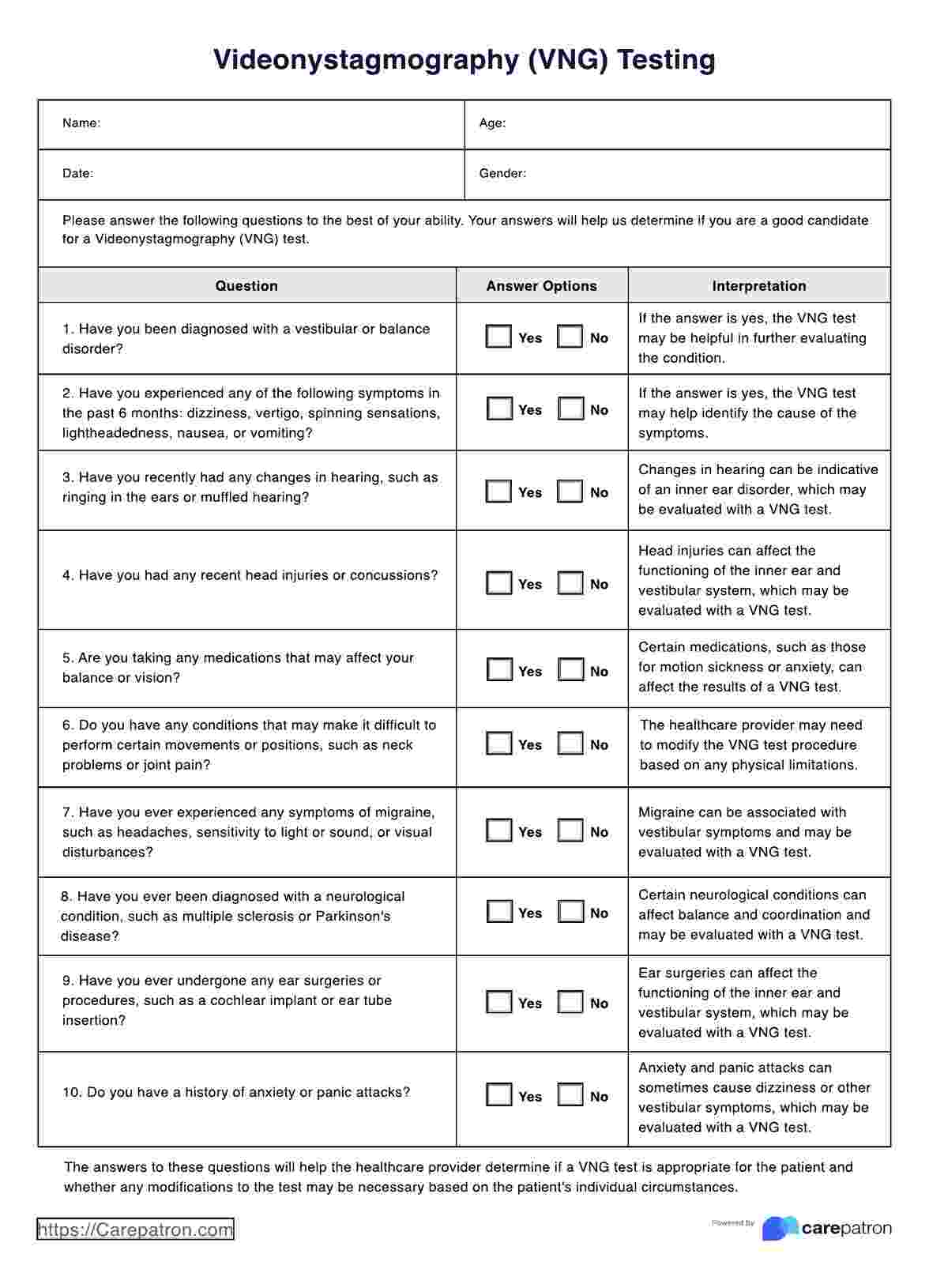The VNG test is conducted by wearing special goggles that track eye movements while performing various tasks.

Videonystagmography (VNG) Testing
Download a free Videonystamography (VNG) Test PDF. Discover the benefits and FAQ.
Use Template
Videonystagmography (VNG) Testing Template
Commonly asked questions
The VNG measures the function of the vestibular system and can help diagnose a range of vestibular disorders.
The purpose of the VNG is to evaluate the function of the vestibular system and diagnose vestibular disorders.
EHR and practice management software
Get started for free
*No credit card required
Free
$0/usd
Unlimited clients
Telehealth
1GB of storage
Client portal text
Automated billing and online payments











